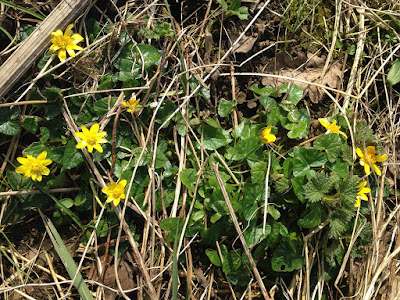Many of these migrating birds are part of a group of small, insect-eating birds called warblers. These birds can look very similar to one another, but fortunately they all have distinctive songs - of course, that's why they're called warblers!
We had fun identifying two almost identical warblers: Willow Warbler and Chiffchaff. Willow Warblers sing a lovely descending song, whereas Chiffchaffs (like Cuckoos) sing their name: chiff-chaff-chiff-chaff.
Chiffchaff - St Ives, Bingley 10th April 2016 (photo: Chris Chandler)
As we walked we heard a Curlew high overhead - a very evocative sound. These wading birds breed on the moors and upland pasture just by St Ives. Curlews also migrate, but generally only go as far as our beaches and coastal mud flats in winter.
We also noticed a Sparrowhawk being mobbed by crows, then a Buzzard appeared overhead, then we saw two Sparrowhawks mobbing two Buzzards! Birds of prey (or raptors as they are often called) like these warm and sunny days in early spring, where they can catch the thermals and display over their territories.
Taking the path round Coppice Pond, we watched a territorial Mute Swan shooing away a Canada Goose, and heard the loud calls of the resident Nuthatches. Some of us were lucky enough to catch sight of a Perch in the pond.
We spotted this crazy Carrion Crow, which kept flying in from near Coppice Pond, carrying what at first looked like a carrot in its bill. On closer inspection, we saw it was carrying three cheesy wotsits! It then burried them in the hourse padock and flew off ...only to return with another beak-full 30 seconds later, and bury those too!
Carrion Crow - St Ives, Bingley 10th April 2016 (photos: Chris Chandler)
We finished the walk at St Ives visitor centre and saw our first Swallows of the year - always a nice feeling to know summer is well and truly on it's way.
Thanks to everyone who came to the event and made it so enjoyable.











